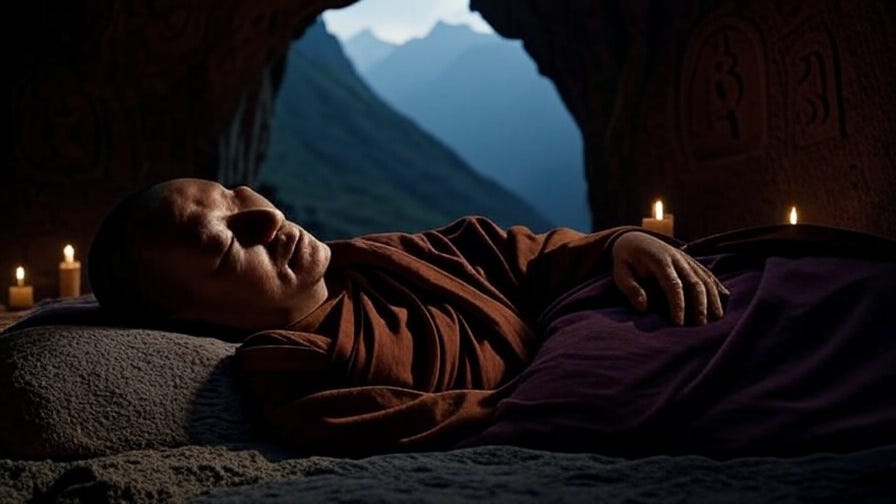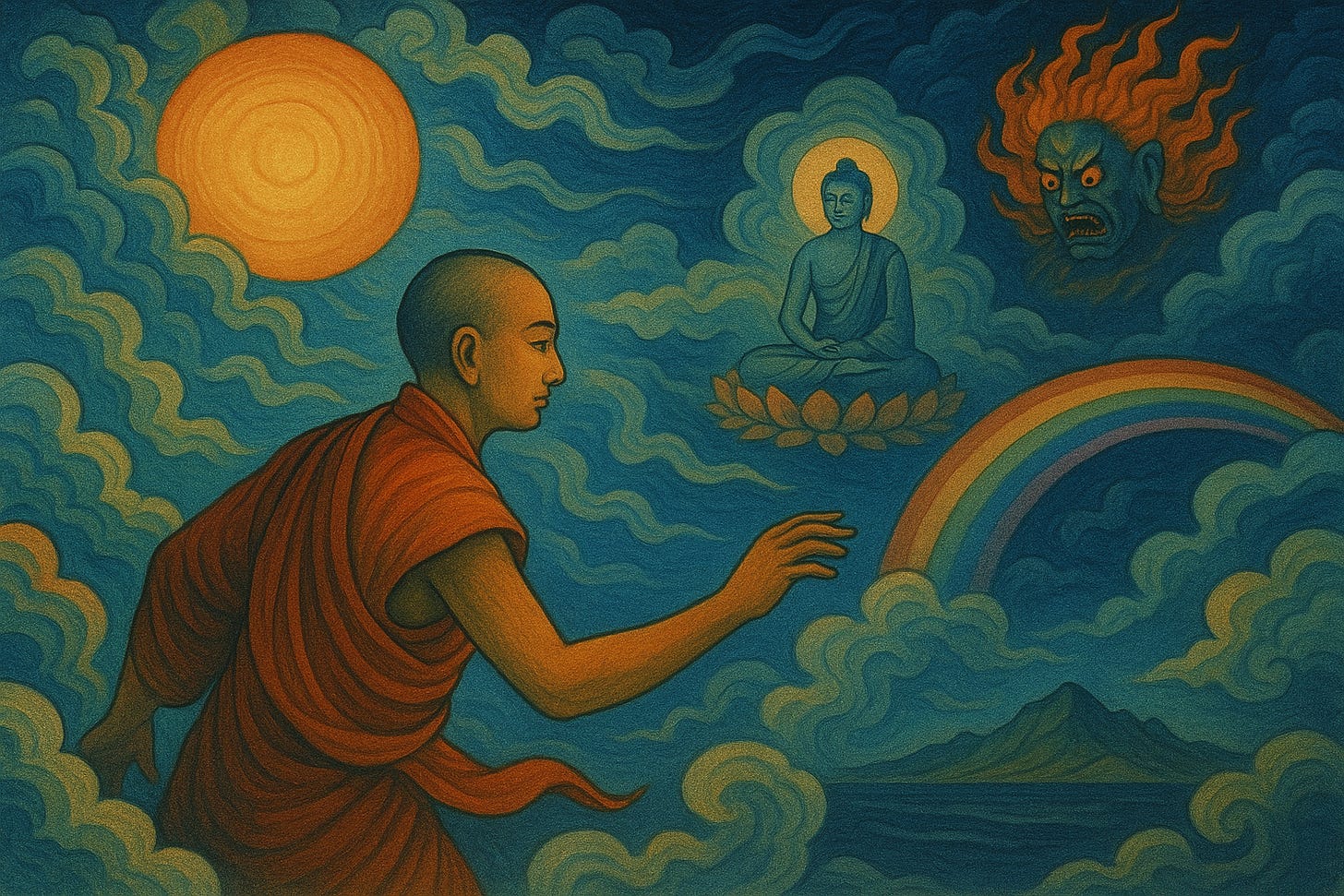Death is something we all face, but few of us are ready for. Most people avoid thinking about it—until they can’t. But in Tibetan Buddhism, preparing for death is not strange or morbid. It’s seen as one of the most important spiritual practices of all.
One of the most famous guides for this process is The Tibetan Book of the Dead, also known as the Bardo Thödol. This mysterious and powerful text has helped people for centuries understand what happens after we die—and how we can prepare for it.
Whether you believe in reincarnation or not, this ancient book offers deep insights into the human experience—and what may lie beyond.
Why Read About Death Now?
You might be wondering: “Why should I think about death before it happens?” Good question.
Tibetan Buddhists believe that remembering death helps us live more fully. It wakes us up. If we realize that everything is temporary—our body, our possessions, our relationships—we can stop clinging so tightly. We can love more deeply, forgive more easily, and focus on what really matters.
Also, when death does come (as it will), we’ll be less afraid. We’ll know what to expect, and we’ll have some inner tools to navigate the unknown.
What Happens After Death?
The Tibetan Book of the Dead describes three main stages or bardos that happen after death:
1. The Chikhai Bardo: The Moment of Death
This is the actual process of dying. The body shuts down. The five senses fade. The mind begins to dissolve.
At the moment of death, according to the text, we have a brief chance to recognize the clear light of pure awareness—our true nature. If we do, we can become instantly free from the cycle of rebirth (called samsara). But most of us are not trained to recognize it. So we move on to the next stage.
2. The Chönyid Bardo: The Bardo of Visions
This is the stage where we see vivid and sometimes terrifying visions. Peaceful deities and wrathful deities appear. These are not gods in the way most people think. They are symbolic forms that represent our own mind—our thoughts, emotions, memories, and karma.
If we recognize them as illusions or dream-like projections, we can be liberated. But if we get scared, confused, or try to run away, we remain stuck.
This stage is a mirror. Whatever we did in life—our habits, fears, and wisdom—all show up in colorful, dramatic ways.
3. The Sidpa Bardo: The Bardo of Becoming
This is the final stage, leading to rebirth. The being now feels a pull toward a new life, drawn by their karma and desires. This is when images of parents may appear, symbolizing the entrance into a new womb.
Even at this stage, it’s still possible to wake up. If the mind can recognize what’s happening, it can choose not to be reborn—or to be reborn consciously, for the benefit of others.
Is This Just a Myth?
Some people may see these teachings as symbolic rather than literal. The bardos might represent states of mind we go through in life—times of change, fear, confusion, or opportunity. Others believe they describe an actual journey the soul takes after physical death.
Either way, the message is powerful: how we die depends on how we live. If we train our mind now—through meditation, compassion, and wisdom—we’ll be better prepared for whatever comes, including death.
What Can We Learn From It?
Here are a few key takeaways, whether or not you believe in rebirth:
Practice letting go. Death is the ultimate letting go. Practicing this in daily life—of attachments, grudges, and ego—helps us prepare.
Train in awareness. The clear light of awareness is said to shine at the moment of death. The more we connect with it now (through meditation or mindfulness), the more likely we are to recognize it later.
Live ethically. Our habits and intentions shape our experience after death. Living with kindness, honesty, and compassion can create a peaceful inner world that carries on.
Don’t fear your mind. The scary or beautiful things we meet in the bardo are just our mind. Learning to face our thoughts and emotions now prepares us to meet them skillfully later.
Help others die well. Reading this text aloud to someone who is dying can be an act of deep love. Even just being present and calm can make a difference.
The Tibetan Book of the Dead is not just about death. It’s about waking up—right now. It reminds us that life is fleeting and precious. That we are more than our bodies or thoughts. That the mind has incredible power—and also the potential for total freedom.
You don’t have to wait until the end to begin your training. In fact, the best time to prepare for death is while you’re fully alive.
As the Tibetan masters say: "If you die before you die, then when you die, you will not die."





